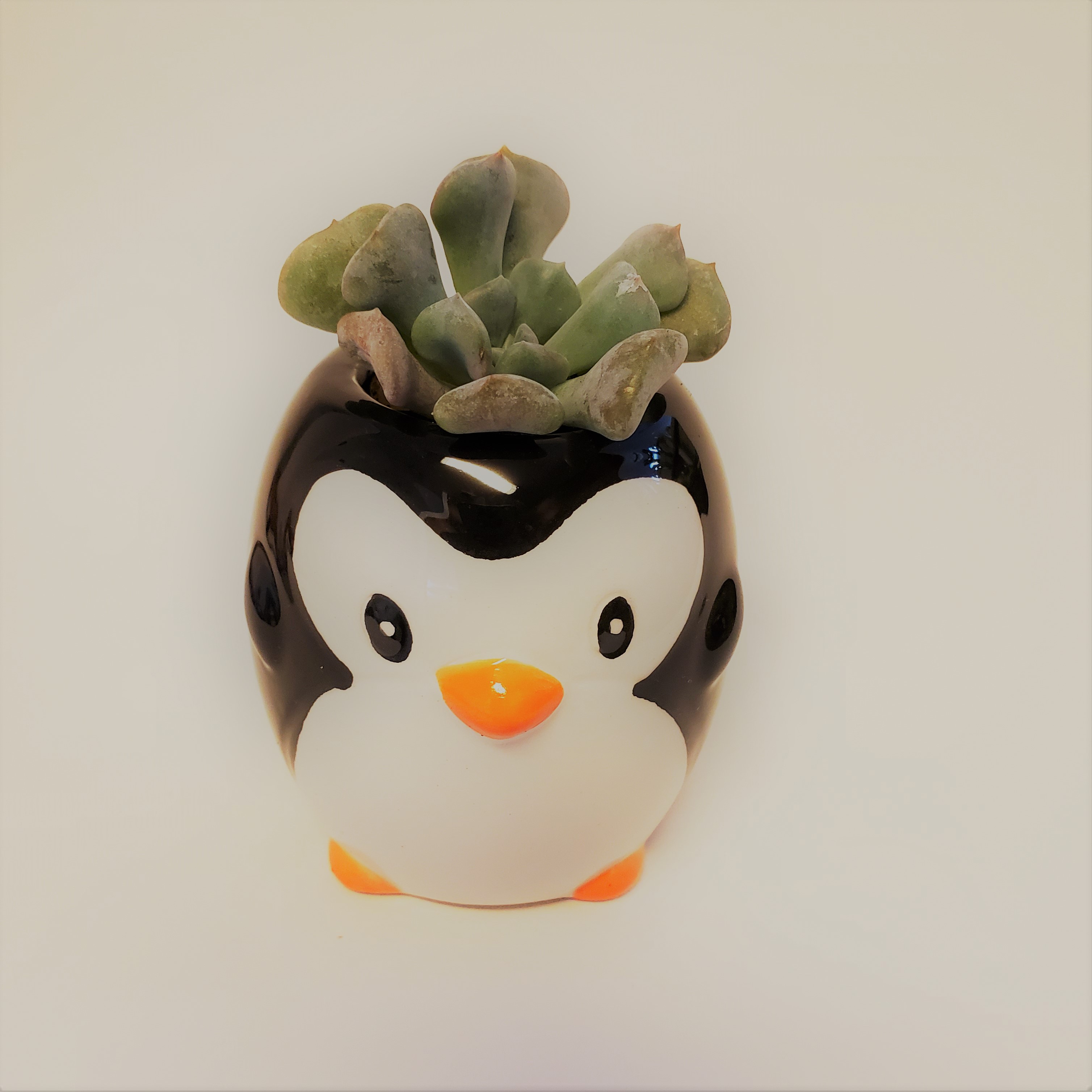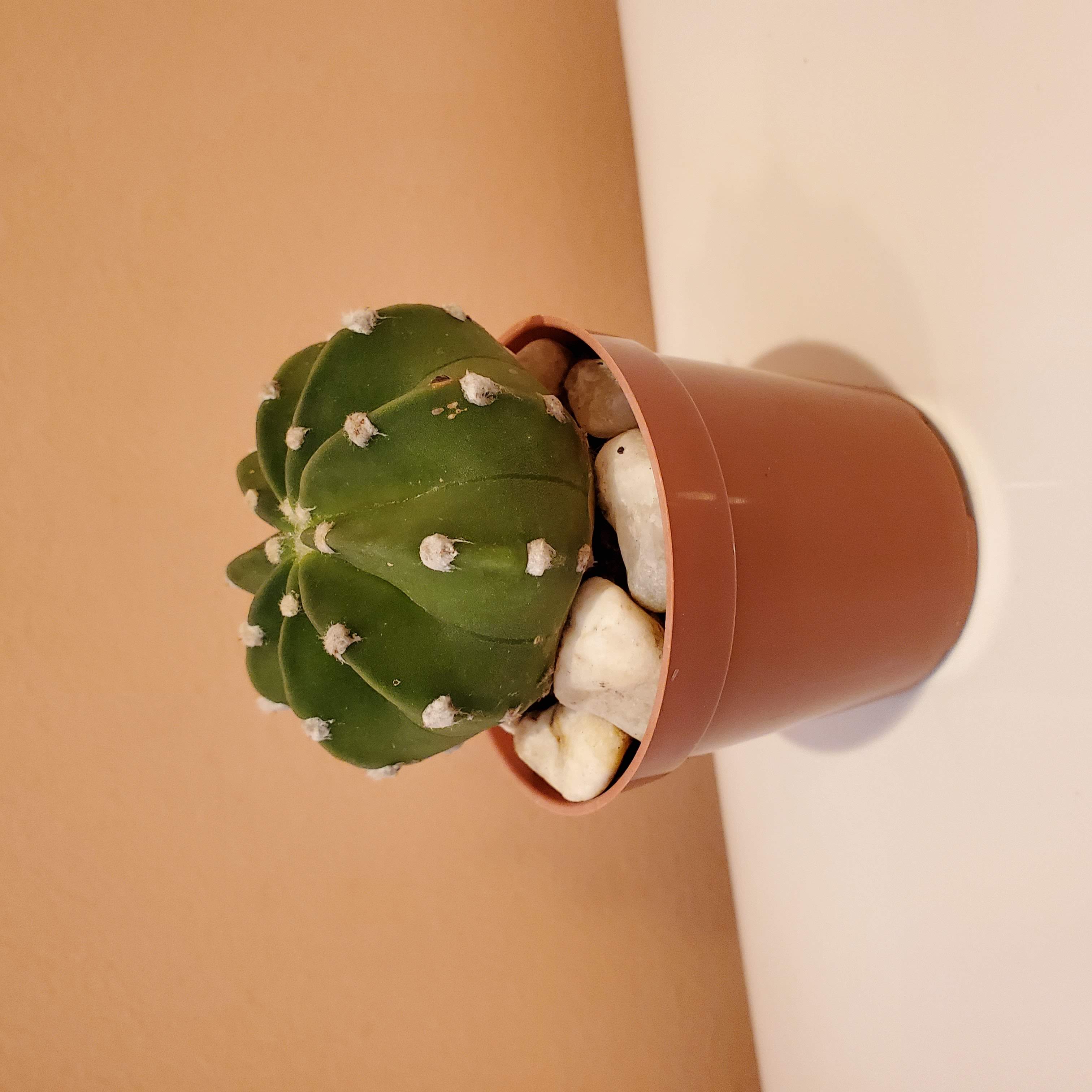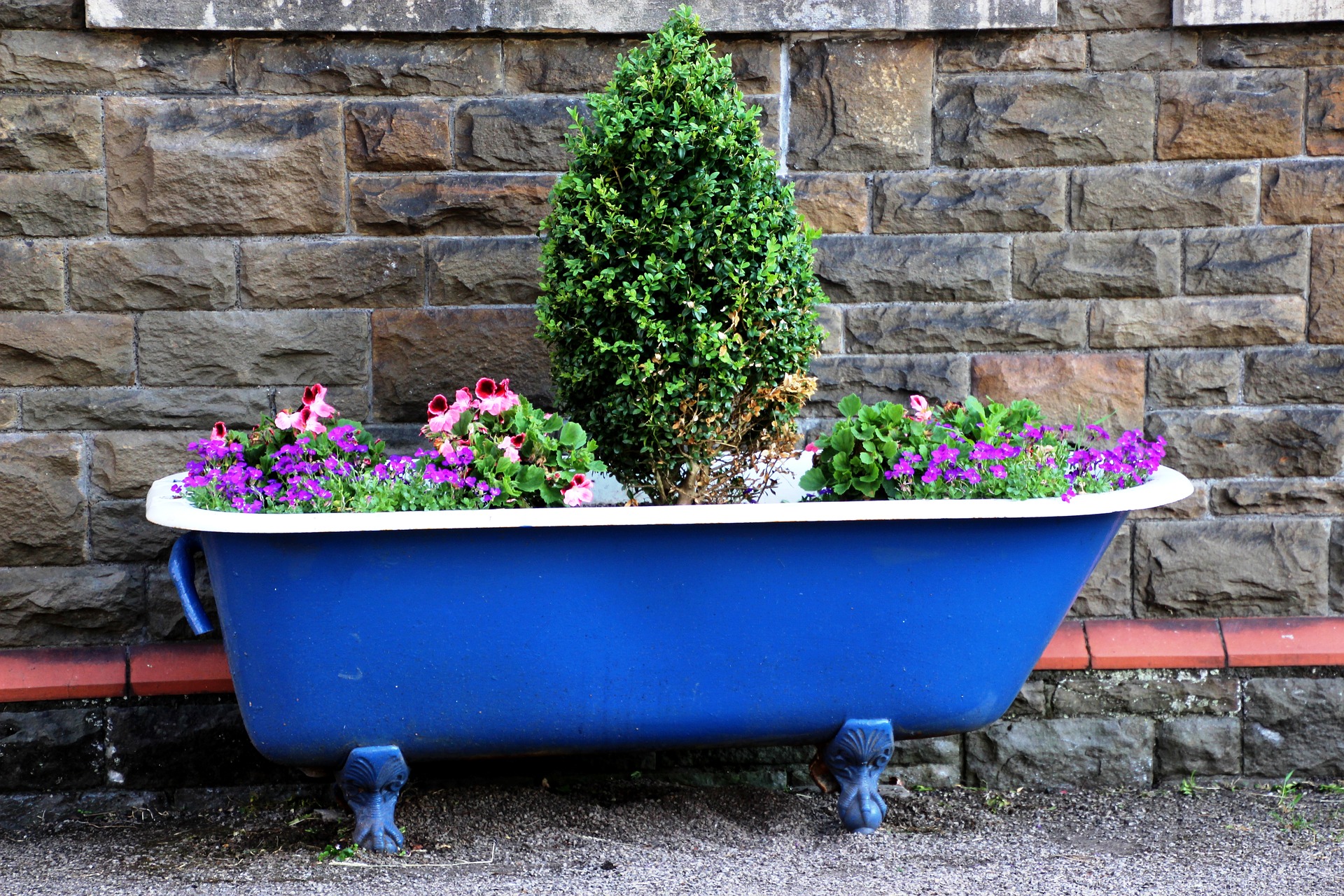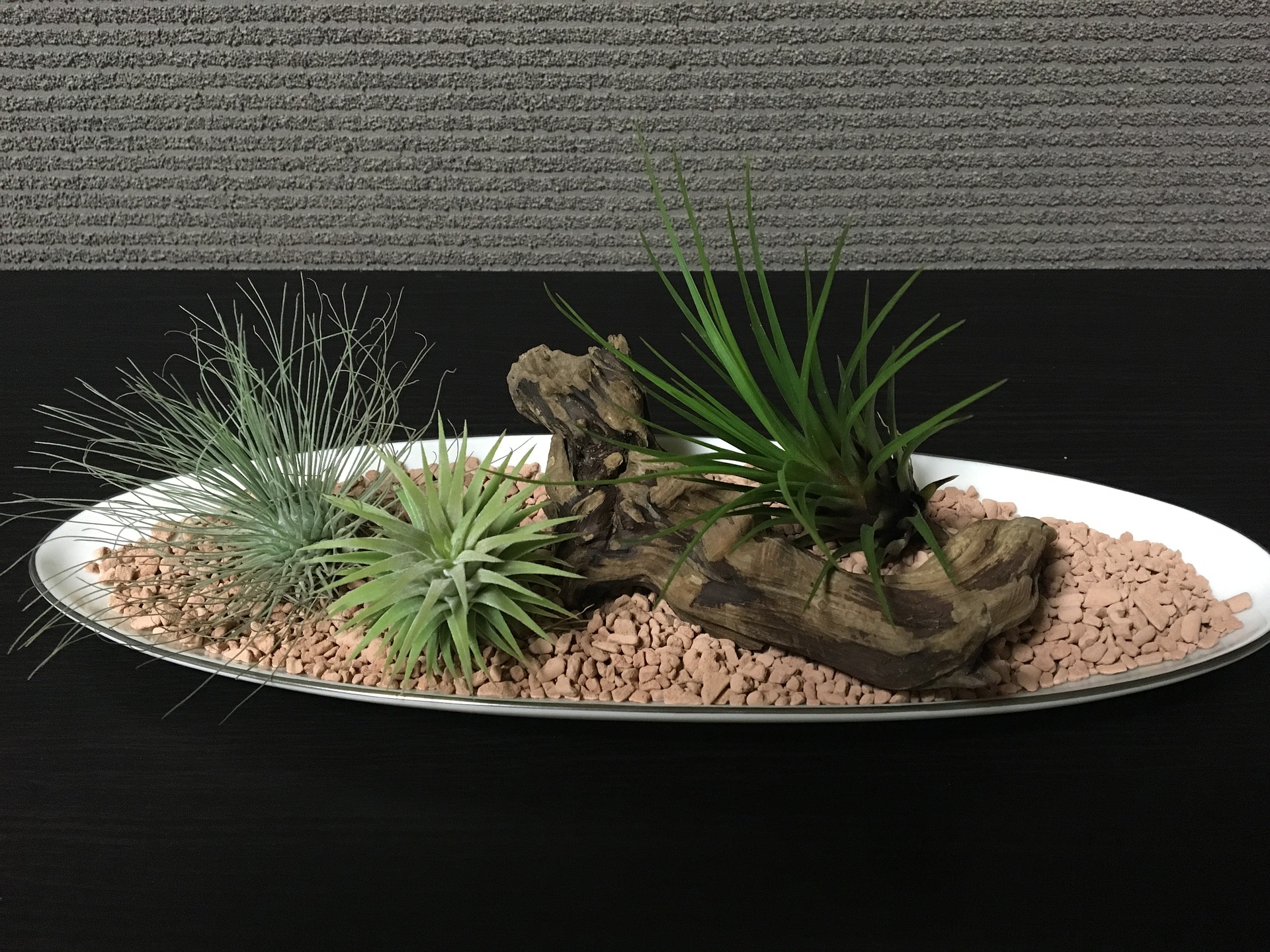- Home
- Succulents
- Echeveria Cubic Frost
Echeveria Cubic Frost
Echeveria Cubic Frost has fleshy, upturned leaves in shades of light green to pale purple. It can grow up to 5 inches in diameter. It likes a dry, sunny environment.
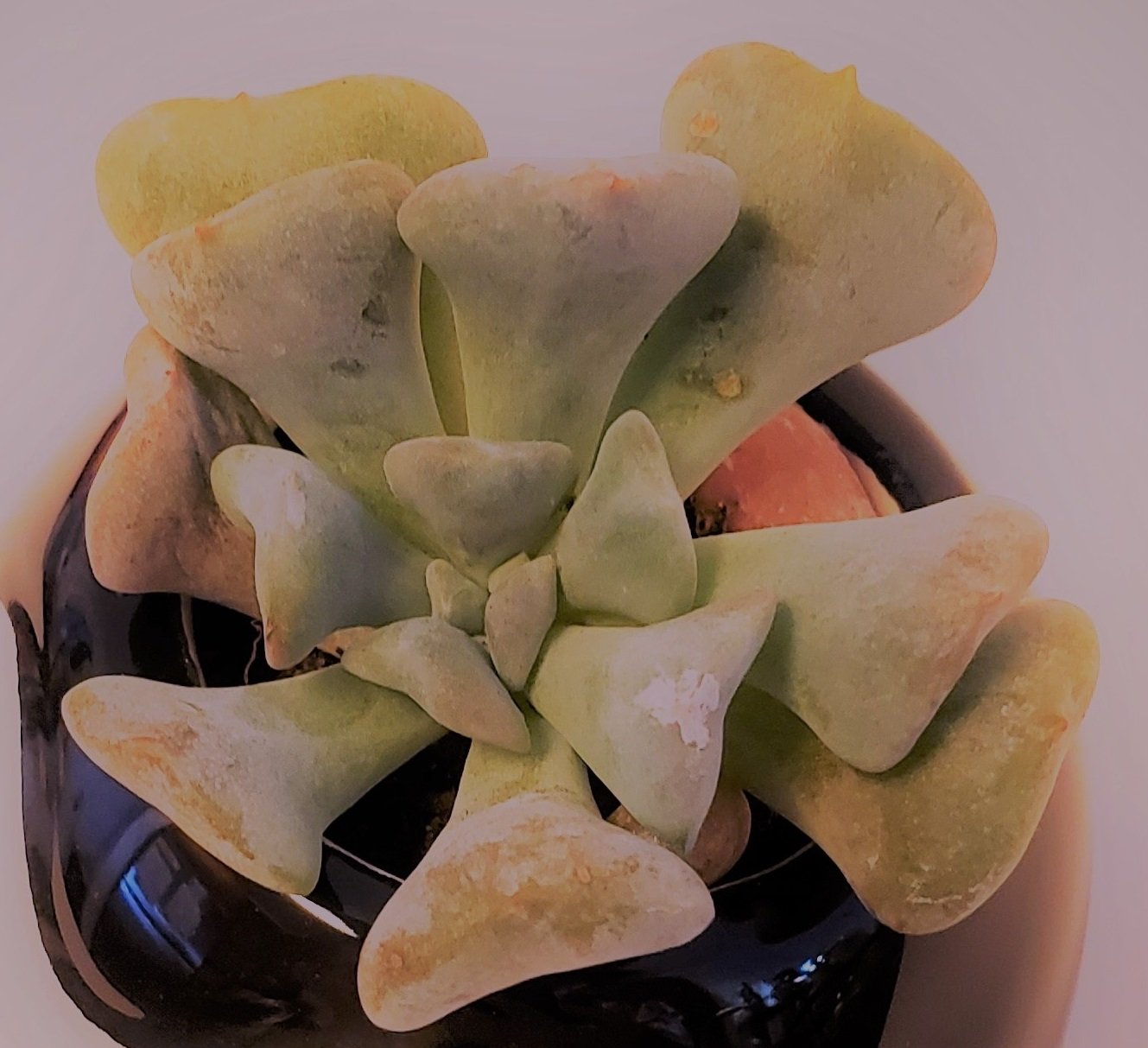
The leaves of Echeveria Cubic Frost are very distinctive, similar to the leaves of Topsy Turvey and Swan Lake. They look a bit like they were attached inside out or upside down.
Cubic Frost is actually a patented hybrid plant created by Altman Plants.
In bright sun, the leaves will turn a lovely lilac-pink color. This is what really differentiates it from the more common Topsy Turvy (in low light conditions, the two plants look very similar).
Cubic Frost has a thick layer of natural powdery coating called farina. This is what gives it its distinctive frosty finish. Don't wipe this off - it is actually what protects the plant from getting sunburn in full sunlight.
|
Scientific name |
Echeveria 'Cubic Frost' |
|
Common name |
Cubic Frost |
|
Sun needs |
Full sun |
|
Water needs |
Water when completely dry |
|
Hardiness zone |
9 |
|
Blooms |
Tall stem with vivid coral-orange flowers |
Echeveria Cubic Frost Care
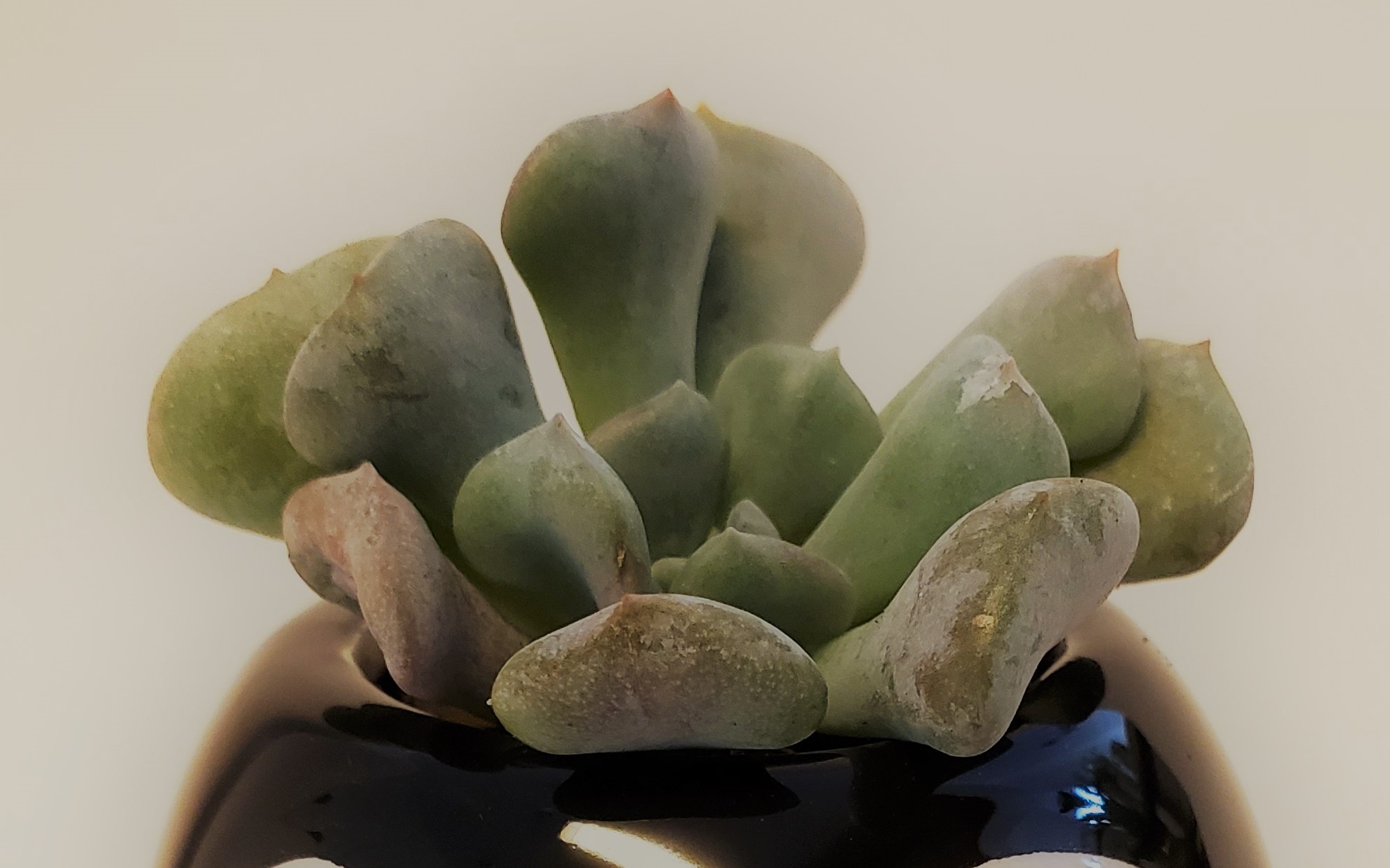
Like other Echeveria, there are a few important things to watch out for: don't overwater, and give it enough light so it doesn't grow tall and leggy.
I find the best way to water Echeveria succulents is by "bottom-watering", meaning letting the pot soak in a dish of water for several minutes to allow the soil to soak up water from the bottom drainage holes. This way, you won't get water on the plant's leaves which can cause rot. Let the soil completely dry out before watering again.
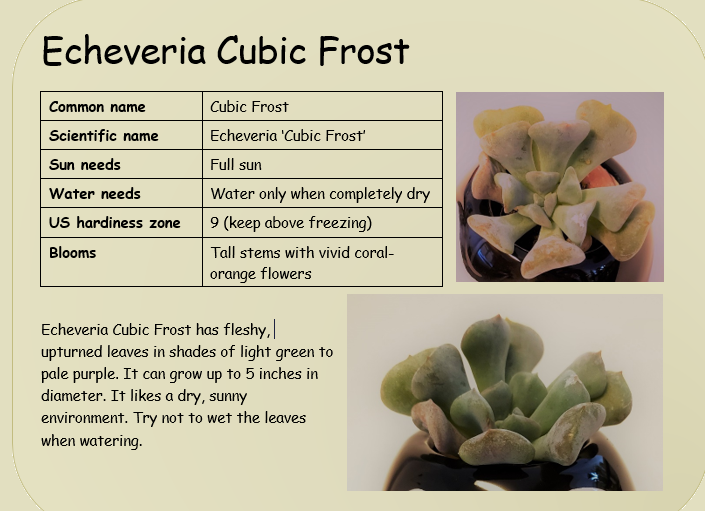
Echeveria Cubic Frost flowers
In spring or early summer, Cubic Frost produces tall stems topped with vivid coral-orange flowers. Hummingbirds usually love to visit Echeveria blossoms, so set it on your patio and wait for the little birds to find it.
Where can I buy Echeveria Cubic Frost?
You might be lucky and find Echeveria Cubic Frost with other small succulents in the houseplant section of your local big nursery retailer like Home Depot or Lowes, but it is quite rare to find them in stores such as this.
Your best bet is to look online. For example, I have this cute penguin planter with Echeveria Cubic Frost here.
Problems
Why are the leaves on my succulent turning brown?
Brown leaves on your Echeveria probably means it is either overwatered or underwatered.
If the leaves are yellowish and mushy, or the center of the plant is turning black or brown, that is a sign of rot from overwatering. Stop watering the plant for several weeks, or remove the plant from the damp soil, and lay it on paper towel to dry out for a few days. You can then repot in well-draining cactus/succulent soil.
If the leaves are turning brown at the tips, and feel crispy or dried up, that may be because of underwatering, or very dry air. Try increasing your watering frequency or give it a good soak. Just sink the pot into a slightly larger pot full of water. After thirty minutes of soaking, be sure to let it drain well - never leave your plant sitting in water.
It is quite common for the lower leaves of the rosette to turn brown and dry up over time. This is just the plant's way of sending its energy to the new growth at the center of the rosette. Just regularly pull off any of these dead leaves (I find a pair of tweezers is useful for this).
- Home
- Succulents
- Echeveria Cubic Frost
